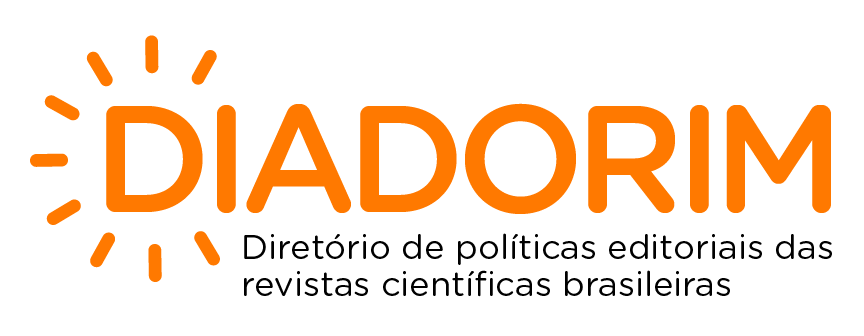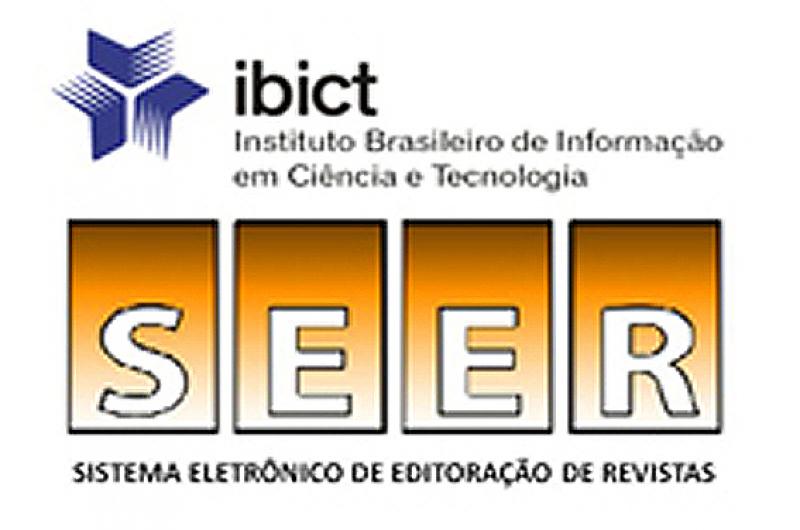Median lethal concentration for nitrogen compounds in scallops (Nodipecten nodosus Linnaeus, 1758) (Mollusca, Bivalvia)
Visualizações: 14DOI:
https://doi.org/10.31416/rsdv.v13i3.889Palavras-chave:
Comportamento, Pectinídeos, Toxicidade, Qualidade de águaResumo
O objetivo deste estudo foi identificar a concentração letal mediana (CL50) dos compostos nitrogenados amônia, nitrito e nitrato em sementes de Nodipecten nodosus, bem como avaliar a incidência de alterações comportamentais e histológicas em brânquias de vieiras. A toxicidade dos compostos nitrogenados foi investigada utilizando um delineamento experimental inteiramente casualizado, utilizando sete concentrações de amônia total, 3, 6, 12, 15, 18, 25 e 30 mg L-1 (equivalente a 0; 0,10, 0,21, 0,43, 0,54, 0,65, 0,90 and 1,0 mg L-1 de amônia não-iônica), e um controle (0 mg L-1); 25, 50, 100, 500, 600, 750, 900 e 1000 mg L-1 para nitrito e 100, 500, 1000, 6000, 7500, 9000 e 10000 mg L-1 para nitrato. A CL50 de 96 h da amônia total foi estimada em 8,614 mg L-1 (0,2972 mg L-1 NH3) através do teste TSK (Trimmed Spearman-Karber), e não foi possível encontrar a concentração letal mediana para nitrito e nitrato a partir das concentrações utilizadas. Durante a exposição aos compostos nitrogenados, apenas as vieiras expostas a concentrações mais elevadas de amônia total apresentaram alterações comportamentais, como redução da capacidade de resposta a estímulos externos e perda da capacidade de fixação à parede do recipiente (polietileno). Além disso, análises histológicas branquiais mostraram presença de necrose, infiltrado de hemócitos e hiperplasia nas concentrações de 18, 25 e 30 mg L-1 de Amônia. Através dos teores de nitrito e nitrato utilizados não foi possível estimar a CL50. Com base nesses resultados, a espécie pode ser utilizada em sistemas de produção intensivos.
Referências
ALVES NETO, I.; BRANDÃO, H.; FURTADO, P. S.; WASIELESKY JR, W. Acute toxicity of nitrate in Litopenaeus vannamei juveniles at low salinity levels. Ciência Rural, v. 49, e20180439, 2019.
BOARDMAN, G.D.; STARBUCK, S.M.; HUDGINS, D.B.; LI, X.; KUHN, D.D. Toxicity of ammonia to three marine fish and three marine invertebrate. Enviromental toxicology, V. 19 (2), p. 134 – 142, 2004.
BOWER, C.; BIDWELL, J. Ionization of ammonia in seawater: effects of temperature, pH and salinity. Journal of Fisheries Research Board of Canada, v. 35(7), p. 1012-1016, 1978.
BOYD, C. Water quality. In: Lucas, J.S. and Southgate, P.C. (eds). Aquaculture: farming aquatic animals and plants. Willey-Blackwell, 2nd edition, p 52-82. 2012.
CAMARGO, J. A.; ALONSO, A.; SALAMANCA, A. Nitrate toxicity to aquatic animals: a review with new data for freshwater invertebrates. Chemosphere, v. 58, p. 1255-1267, 2005.
CONG, M.; WU, H.; YANG, H.; ZHAO, J.; JIASEN, L, V. Gill damage and neurotoxicity of ammonia nitrogen on the clam Ruditapes philippinarum. Ecotoxicology, v. 26, p. 459-469, 2017.
CONG, M.; WU, H.; CAO, T.; LV, J.; WANG, Q.; JI, C.; LI, C.; ZHAO, J. Digital gene expression analysis in the gills of Ruditapes philippinarum exposed to short- and long-term exposures of ammonia nitrogen. Aquatic Toxicology, v. 194, p. 121 – 131, 2018.
CONG, M.; WU. H.; CAO, T.; JI, C.; LV, J. Effects of ammonia nitrogen on gill mitochondria in clam Ruditapes philippinarum. Environmental Toxicology and Pharmacology, v. 64, p. 46 – 52, 2019.
CONG, M.; LI, Y.; XU, H.; LV, J.; WU, H.; ZHAO, Y. Ammonia nitrogen exposure caused structural damages to gill mitochondria of clam Ruditapes philippinarum. Ecotoxicology and Enviromental Safety, v. 222, 112528, 2021.
DYBAS, P. R. Sistema de recirculação de água para larvicultura de ostras Crassostrea gigas. Dissertação (Mestrado). Universidade Federal de Santa Catarina. Centro de Ciências Agrárias). Florianópolis, Santa Catarina, Brasil, 21f, 2014.
EPIFANIO, C. E.; SRNA, R. F. Toxicity of ammonia, nitrite ion, nitrate ion, and orthophosphate to Mercenaria mercenaria and Crassostrea virginica. Marine Biology, v. 33, p. 241–246, 1975.
FAO (Food and Agriculture Organization). The State of World Fisheries and Aquaculture 2024 (SOFIA): Blue Transformation in Action. Rome, 2024. Available at: https://www.fao.org/publications/home/fao-flagship-publications/the-state-of-world-fisheries-and-aquaculture/en.
HAMILTON, M. A.; RUSSO, R. C.; THURSTON, R. V. Trimmed Sperman-Karber: Method for estimating median lethal concentrations in toxicity biossays. Environmental Science Technology, v. 11, p. 714-719, 1977.
KLEINHENZ, L.; HUMPHREY, C.; MOONEY, T. J.; TRENFIELD, M. A.; VAN DAM, R. A.; NUGEGODA, D.; HARFORD, A. J. Chronic ammonia toxicity to juveniles of two tropical Australian freshwater mussels (Velesunio spp.): toxicity test optimization and implications for water quality guidelines values. Environmental Toxicology and Chemistry, 38 (4), p. 841- 851, 2019.
LU, J.; YAO, T.; SHI, S.; YE, L. Effects of acute ammonia nitrogen exposure on metabolic and immunological responses in the Hong Kong oyster Crassostrea hongkonkensis. Ecotoxicology and Enviromental Safety, v. 237, 113518, 2022.
MANZONI, G. C.; RUPP, G. S. Estudo da biologia reprodutiva e viabilidade de cultivo de Lyropecten nodosus (Linnaeus, 1758) (Mollusca: Pectinidae) na ilha do Arvoredo – SC. Florianólis: UFSC, 35 pp. (Relatório Final, Projeto), 1993.
MARQUES, H. D. A.; GALVÃO, M. S. N.; GARCIA, C. F.; HENRIQUES, M. B. Economic analysis of scallop culture at the north coast of São Paulo State, Brazil. Boletim do Instituto de Pesca, v. 44(2), 2018.
MIAO, J.; BARNHART, M. C.; BRUNSON, E. L.; HARDAESTY, D. K.; INGERSOLI, C. G.; WANG, N. An evaluation of the influence of substrate on the response of juvenile freshwater mussels (fatmucket, Lampsilis siliquoidea) in acute water exposures to ammonia. Environmental Toxicology and Chemistry, v. 29 (9), p. 2112 – 2116, 2010.
REDDY, N. A.; MENON, N. R. Effects of ammonia and ammonium on tolerance and byssogenesis in Perna viridis. Marine ecology, v. 1, p. 315-321, 1979.
RIOS, E. Compedium of brazilian sea shells. Rio Grande: Evangraf LTDA. 676 p, 2009.
RUPP, G. S. Cultivo da vieira Nodipecten nodosus em Santa Catarina: influência da profundidade, densidade e frequência de limpeza. Boletim Técnico 135. Epagri. Florianópolis, Brasil. 83 p, 2007.
RUPP, G. S.; PARSONS, G. J. Aquaculture of the scallop Nodpecten nodosus in Brazil. In Shumway, S.E. and Parsons, J (eds) Scallops: Biology, Ecology, Aquaculture, and Fisheries. 3rd Edition, Elsevier Science, p. 999-1017, 2016.
RUPP, G. S.; PARSONS, G. J. Effects of salinity and temperature on the survival and byssal attachment of the lion's paw scallop Nodipecten nodosus at its southern distribution limit. Journal of Experimental Marine Biology and Ecology, v. 309(2), p. 173-198, 2004.
SOUCEK, D. G.; DICKINSON, A. Acute toxicity of nitrate and nitrite to sensitive freshwater insects, mollusks, and a crustacean. Archives of Environmental Contamination and Toxicology, v. 62, p. 233 – 242, 2012.
TOMASSO, J. R. Toxicity of nitrogenous wastes to aquacultured animals. Reviews in Fisheries Sciences, v. 2(4), p. 291-314, 1994.
URIARTE, I.; RUPP, G.; ABARCA, A. Producción de juveniles de pectínidos Iberoamericanos bajo condiciones controladas. In: Maeda-Martinez, A.N. (Ed.). Los Moluscos Pectínidos de Iberoamérica: Ciencia y Acuicultura. Editorial LIMUSA, México. p. 147–171, 2001.
WIDMAN, J. C. JR; MESECK, S. L.; SENNEFELDER, G.; VEILLEUX, D. J. Toxicity of un-ionized ammonia, nitrite, and nitrate to juvenile bay scallops, Argopecten irradians irradians. Archives of Environmental Contamination and Toxicology, v. 54, p. 460-465, 2007.
ZHANG, T.; YAN, Z.; ZHENG, X.; WANG, S.; FAN, J.; LIU, Z. Effects of acute ammonia toxicity on oxidative stress, DNA damage and apoptosis in digestive gland and gill of Asian clam (Corbicula fluminea). Fish and Shelfish Immunology, v. 99, p. 514 – 525, 2020.
Downloads
Publicado
Como Citar
Edição
Seção
Licença
Copyright (c) 2025 Revista Semiárido De Visu

Este trabalho está licenciado sob uma licença Creative Commons Attribution 4.0 International License.















